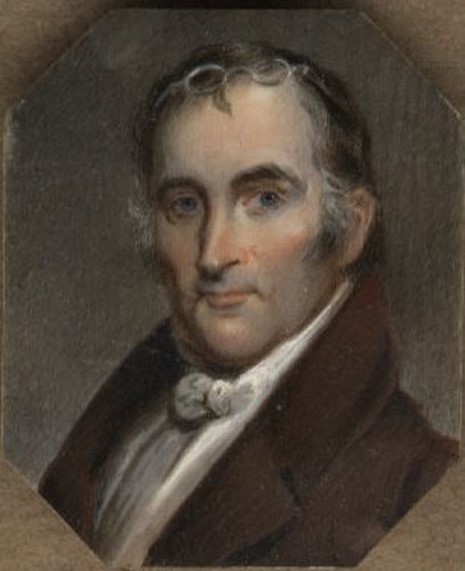The plantation called Farmington was established by John Speed. We know that Speed had taken ownership of Farmington by 1809 through examining tax records for Jefferson County. In a letter to his business partner, William Pope, Speed claims that his family was living in “our cabins” on the Farmington property by that year.
John Speed was born just before the American Revolution on May 17, 1772 in Virginia. He moved to Kentucky with his family in 1782 when his father settled on a land grant in the Danville area. Kentucky was still a frontier region in the eyes of the white settlers of the day and thus Speed lacked formal educational opportunities (though the founding of Centre College in 1819 would begin to address that issue). Danville became Kentucky’s capital and an early economic hub for the burgeoning state.
To read just a few of John Speed’s letters leaves no doubt that he was able to acquire a pretty decent education and indeed he was strongly committed to the rigorous education of his children, both male and female. Speed had witnessed his father’s involvement in Kentucky’s early political development. Following in his father’s footsteps, John aligned himself with the supporters of Henry Clay and became a member of the Whig political organization.
Perhaps most importantly, John Speed developed a very strong entrepreneurial quality. He seems to have had a sense of how and when to invest in ventures and to know what activities would bring profit. Additionally, it is impossible to deny that John Speed worked hard, Combining the elements of personal industry, natural business sense, and family wealth provided a reasonable chance for success in Kentucky’s frontier environment. Speed capitalized on that opportunity to become one of the wealthiest men in his region.
With support from his family and using the labor of enslaved people John Speed and his brother, Thomas, purchased a salt mine (known as a “lick” at the time) in the early 1790s. Called “Mann’s Lick”, the business was located near Shepherdsville, Kentucky. About that time, Speed joined the Kentucky forces fighting against Native Americans in the region. The leader of these troops was General Charles Scott who became a future governor of Kentucky. Like his father, John Speed was appointed to be a judge in Jefferson County, Kentucky even though he had no formal legal training. This appointment provided Speed with the life-long title of Judge John Speed.
Just before the turn of the 19th Century Judge John Speed married Abby LeMaster. While living near Mann’s Lick, the Speeds had four children. Two of those children, both boys, died in infancy. Two daughters survived. Mary (born in 1800) and Eliza (born in 1805). Tragically, Abby Speed died in 1807 leaving her husband to raise the two girls.
Sometime after Abby Speed’s death, John relocated his family to the Danville area. There he met Lucy Fry (born 1788). Lucy was 16 years younger than John and, it may be noted, only 12 years older than Mary Speed. The two were married in 1808.
While all of this was going on in John Speed’s personal life, he continued to pursue his business interests with success. He and his brother Thomas had both inherited property from their father and sometime around 1800 John joined with William Pope, Jr. and others to purchase a large tract of land in the “Beargrass Preserve” along the Beargrass Creek. John Speed then purchased 554 acres from his partners sometime before 1809. At some point that property was determined to be 550 acres and this became “Farmington”.
In the next posting I will talk more about John Speed’s life and his development of Farmington as a successful plantation. Until then, my best to you and yours.
David

